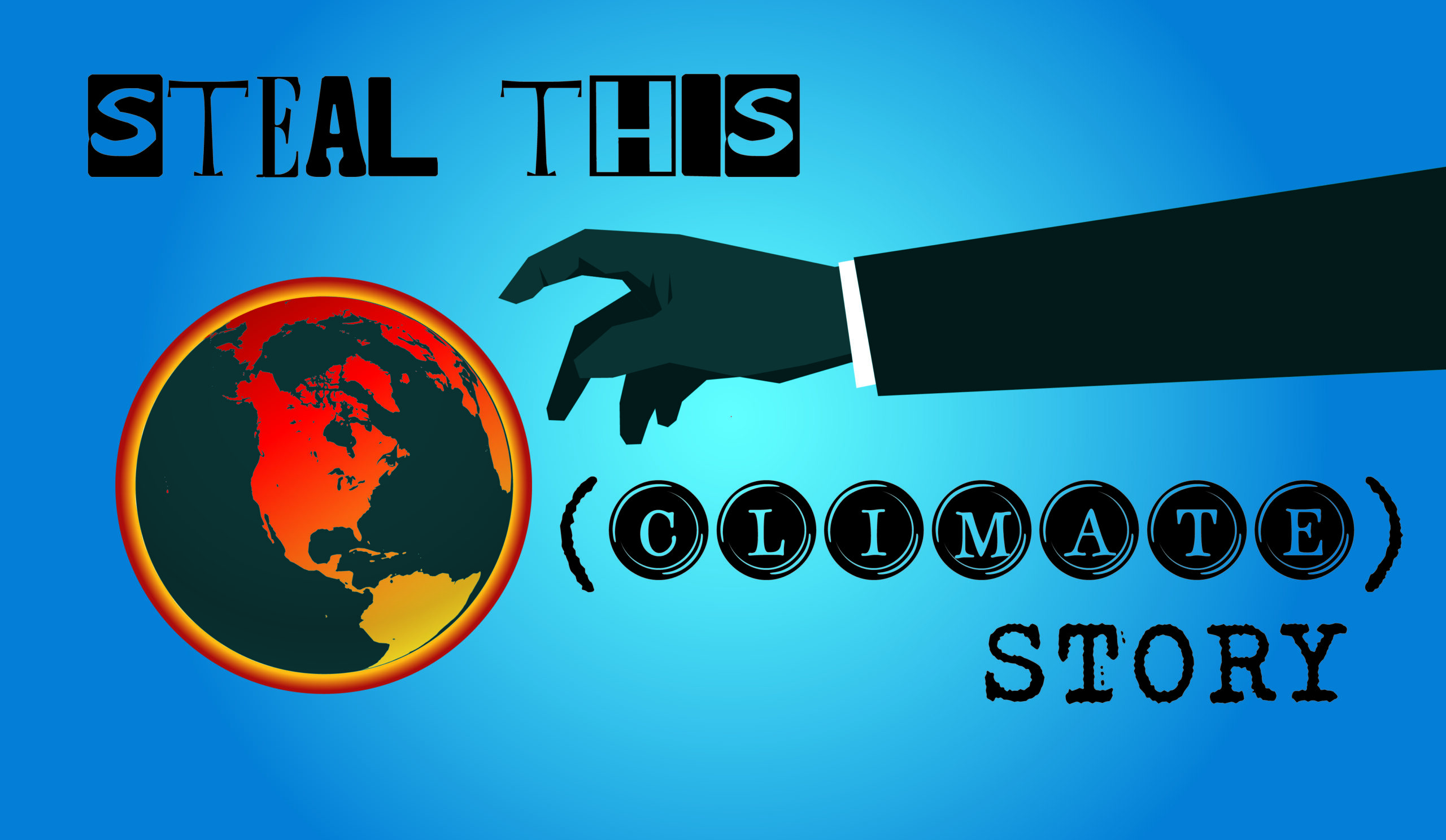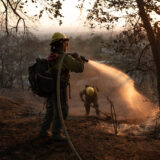Steal This (Climate) Story
The Climate Crisis Is a Health Crisis
How to follow the heat to the next disease; and how following the science got a researcher in trouble.

The direct and indirect health impacts of climate change are one of the most underreported aspects of the climate crisis. The medical and scientific journals are filled with examples of diseases shifting along with the shifting climatic conditions, but the links between the environment and personal health rarely make it into the media. In the last column I talked about the direct impacts of greenhouse gases on our health. This time, let’s focus on why the American Public Health Association has determined that the changing climate being wrought by the accumulation of those gases in the atmosphere are triggering a health emergency.
Join our email list to get the stories that mainstream news is overlooking.
Sign up for Capital & Main’s newsletter.
Medical professionals in the U.S., warns the CDC, may be thoroughly unprepared to treat diseases that have been previously confined to tropical Africa and Latin America. The World Health Organization says that climate change presents “the biggest health threat facing humanity.” Bugs and bacteria, it turns out, can adapt much better to a changing environment than we humans.
The scientific press is filled with examples of how the changing climate is opening new pathways for insects following the heat, fungi following the moisture, algal blooms proliferating in warming waters fed by phosphate-based agricultural runoff — and how all are being buffeted by the frequency of the extreme swings in temperature and rainfall.
Start with disease-bearing mosquitoes — whose range is rapidly expanding inside the continental United States. The mosquito family known as Aedes aegypti, most responsible for transmitting diseases like zika, dengue, chikungunya and yellow fever, has largely been limited to the tropics but is following the heat into a broad band across the southern United States, from North Carolina and Virginia into the southern portions of California and Arizona. (Concerns over the consequences of the mosquito boom have spurred some interesting bug-control innovations: The EPA approved the release in California and Florida of millions of male mosquitoes genetically altered so they are effectively sterile. The hope is that over several generations the population of disease-carrying mosquitoes will shrink).
Warm, humid conditions and the later onset of winter have also helped spur an expansion in the range of ticks carrying lyme disease for longer seasons in the Northeast, and showing up in greater numbers as far west as California.
American urban centers are experiencing heat waves lasting longer and occurring three times more often than they did in the 1960s.
Warmer temperatures combined with light rains create ideal conditions for the proliferation of fungi carrying what’s known as Valley fever, report a team of researchers at UC Irvine. After warm weather dries the soil, as is often the case amid our newly intense deluge-drought cycles, the fungal spores can be unearthed by anything from earth-moving equipment to the quick kick of a laborer’s boot, and float into the air to be inhaled by anyone nearby. Once in the lungs, the fungi can cause serious damage to the respiratory system, as well as make their way into other parts of the body.
The rates of Valley fever have been rising steadily since 2000 in California and other Western states such as New Mexico and Arizona, and the range of the disease is, the UCI researchers predict, expected to expand north and east into Montana, Nebraska, North Dakota and Wyoming en route to 2100 if current warming trends persist.
Record-high levels of ocean warming are also creating ideal conditions for the proliferation of marine bacteria called Vibrio, which infects shellfish and is transmitted easily to humans, in whom it can cause digestive and skin ailments. Its range has been spreading ever northward along with rising seawater temperatures.
Hot Times
Then there is the direct effect of the heat itself. Climate Central has compiled data showing that American urban centers are experiencing heat waves lasting longer and occurring three times more often than they did in the 1960s — a span of six decades during which the average temperature has increased about 0.25 degrees Fahrenheit per decade. That is particularly acute in areas of cities where urban heat islands, most often located in lower income communities populated by communities of color, can get as much as 15-20 F higher than other areas with more green space and tree cover. (For more detail on the inequitable distribution of urban green spaces, check out this series of urban maps from the University of Virginia outlining the intersection between cities’ hottest neighborhoods and the discriminatory redlining that shaped their housing patterns). Among all weather-related fatalities, the leading cause of death by far is extreme heat, according to the National Weather Service.
Rising temperatures are also bound to impact the infrastructure that is key to ensuring our health, according to a recent study in the Annual Review of Public Health. Researchers identified more than 700 hospitals, water treatment centers and utilities located in coastal zones or watersheds in Harris County, Texas — home to Houston — at risk of flooding, which is considered increasingly likely over the coming several decades.
One interesting question to the health authorities in this or other, comparable cities: Is there a plan to protect such critical institutions from floods, the chances of which are increasing as patterns of rainfall shift to intense bursts from the moisture-loaded atmosphere?
Of course, the specific health impacts depend on where you are located in the geography of climate vulnerability.
The EPA declared that nitrate and phosphorus runoff “remains the single greatest challenge to our Nation’s water quality and presents a growing threat to public health and local economies.”
In the Southeast, ocean monitors have been watching warily as a massive belt of Sargassum bobs northwest across the Caribbean toward Florida. As of late March, the enormous algal bloom, fed by a combination of nutrient heavy runoff from farm fields flowing into ever-warming seawater, was heading to the beaches of southern Florida. Once they start rotting, according to public health officials, the huge mats of Sargasso emit hydrogen sulfide, a gas that can cause heart, neurological and respiratory damage. There’s more of it coming every year as the waters warm and the nutrients flow unabated.
Halfway across the country, Iowa, like much of the industrial agriculture-heavy Midwest, is dealing with the consequences of excess fertilizer runoff flowing into the tributaries of rivers, many of them key drinking water sources, where the water temperature has been steadily rising. The combination of nitrate-rich fertilizer flowing into warmer waters depleted by years of drought provides a “breakfast buffet for micro-bacteria and algae,” I was told by David Cwiertny, the director of the University of Iowa’s Center for Health Effects of Environmental Contamination. Such substances can contribute to bladder, colorectal and thyroid cancer.
The Environmental Protection Agency declared that nitrate and phosphorus runoff “remains the single greatest challenge to our Nation’s water quality and presents a growing threat to public health and local economies.” Similarly, in California, the state’s Department of Water Resources maintains a database of all the waterways in which such algal blooms are flourishing — the most are in San Joaquin County, the center of the state’s massive agribusiness industry in the Central Valley.
There are abundant stories in every one of these examples. All of these and other potential health threats attributable to the concentration of greenhouse gases in the atmosphere prompted The Lancet, one of the premier medical science journals in the world, to devote an entire issue to what it characterizes as “health at the mercy of fossil fuels.”
How Following the Science to the Sources of Pollution Can Land You in Trouble
Finally, a cautionary tale. The multiple connections between the changing climate and the cascade of health consequences are rarely linked in the media to the specific industries that contribute to those impacts. A scientist who has done so, however, is now paying a heavy price.
Little known outside the realms of environmental health scientists in the Midwest, the University of Iowa’s Chris Jones, with a PhD in analytical chemistry, carved out a specialty of studying the array of contaminants in Iowa’s waterways. He assembled a team of scientists and citizens to monitor the state’s creeks and rivers — and, unlike many other scientists, reported on his findings continually, in his often tartly worded blog on the university’s website. In his blog, he identified the state’s industrial-scale farms and livestock operations as the ones primarily responsible for the water contamination.
Almost two-thirds of Iowa’s water is considered by the state’s own water authority to be “impaired,” meaning too polluted to drink, swim in or eat fish caught in it. In April, however, as was reported in the Chronicle of Higher Education, the state’s Republican-dominated Legislature threatened to pull the funding for his whole department in a move perceived as retaliation for his blog. Rather than run the risk of having his scientific colleagues defunded, he resigned. Jones, who was compelled to leave the university after more than a decade spent monitoring the state’s water, is continuing his blog on Substack. But his story highlights the dangers some scientists, often important sources of public information, face in following the evidence.
Copyright 2023 Capital & Main

-

 Locked OutDecember 23, 2025
Locked OutDecember 23, 2025Section 8 Housing Assistance in Jeopardy From Proposed Cuts and Restrictions
-

 The SlickDecember 19, 2025
The SlickDecember 19, 2025‘The Poor Are in a Very Bad State’: Climate Change Accelerates California’s Cost-of-Living Crisis
-

 Latest NewsDecember 22, 2025
Latest NewsDecember 22, 2025Trump’s War on ICE-Fearing Catholics
-

 Column - State of InequalityDecember 24, 2025
Column - State of InequalityDecember 24, 2025Where Will Gov. Newsom’s Evolution on Health Care Leave Californians?
-

 Latest NewsDecember 29, 2025
Latest NewsDecember 29, 2025Editor’s Picks: Capital & Main’s Standout Stories of 2025
-

 Latest NewsJanuary 8, 2026
Latest NewsJanuary 8, 2026Why No Charges? Friends, Family of Man Killed by Off-Duty ICE Officer Ask After New Year’s Eve Shooting.
-

 Latest NewsDecember 30, 2025
Latest NewsDecember 30, 2025From Fire to ICE: The Year in Video
-

 Column - State of InequalityJanuary 1, 2026
Column - State of InequalityJanuary 1, 2026Still the Golden State?





















